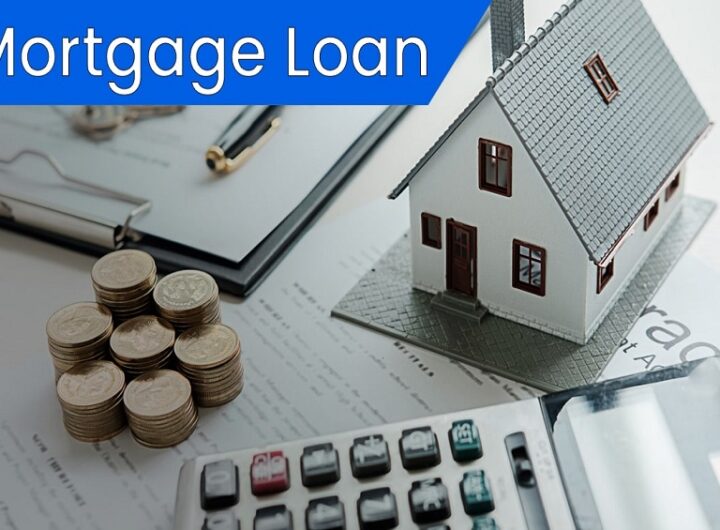
For many, the idea of a “dream home” isn’t a pre-existing house on the market, but a custom-built sanctuary designed from the ground up to fit their unique vision. It’s a place where every wall, every window, and every doorknob is a deliberate choice. However, turning this dream into reality requires a specific kind of financing: a construction loan. Unlike a traditional mortgage, which is used to purchase an existing property, a construction loan is a short-term, specialized financing tool designed to cover the costs of building a new home.
The process might seem daunting at first, but understanding the fundamentals of construction loans can make all the difference. Think of it as a financial blueprint that mirrors the architectural one.
What is a Construction Loan?
At its core, a Construction loans provides the funds needed for every stage of a new home’s creation—from acquiring the land to paying for labor, materials, and permits. It’s a short-term loan, typically lasting about one year, that is disbursed in installments, or “draws,” as construction milestones are met. This staged release of funds is a key differentiator from a traditional mortgage, where the full loan amount is disbursed at closing.
The interest on a construction loan is typically variable and is paid only on the amount of money drawn, not the full loan amount. This system benefits the borrower, as it keeps costs down during the construction phase. However, once the home is complete, the loan must be paid off or, more commonly, converted into a long-term mortgage.
Types of Construction Loans
There are a few different types of construction loans, each with its own characteristics:
- Construction-to-Permanent Loan: This is the most popular type and is often referred to as a “one-time close” loan. With this option, the borrower secures a single loan that covers both the construction phase and the final mortgage. This simplifies the process by requiring only one application, one set of closing costs, and one appraisal. Once the home is built, the loan seamlessly converts into a permanent mortgage with a fixed or variable interest rate. This continuity provides stability and saves time and money.
- Construction-Only Loan: As the name suggests, this loan covers only the construction period. The funds are disbursed in draws, and the loan must be paid off in full once the project is complete. This means the homeowner must then secure a separate, traditional mortgage—a “two-time close”—to pay off the construction loan. While this can offer flexibility in shopping for the best permanent mortgage rate after the home is built, it also means going through two separate application processes, appraisals, and closing procedures, which can be more expensive and time-consuming.
- Renovation Loan: While not strictly for new construction, renovation loans are a type of construction financing. They are designed for major remodeling projects and home additions rather than a full new build. Programs like the FHA 203(k) loan fall into this category, allowing borrowers to finance both the purchase of a home and the cost of renovations into a single mortgage.
The Application Process and Requirements
Securing a construction loan is a more rigorous process than getting a traditional mortgage. Lenders take on more risk because the collateral—the new home—doesn’t yet exist. As a result, they require a comprehensive application package to assess the project’s viability and the borrower’s financial stability.
The key components of a construction loan application include:
- Financial Documentation: As with any loan, you’ll need to provide proof of income, assets, and a strong credit history. Lenders typically look for higher credit scores and a lower debt-to-income ratio than they would for a standard mortgage.
- The Project Plan: This is where your dream home becomes a tangible plan. You’ll need to submit detailed blueprints or house plans, a complete list of materials and specifications, and a budget that breaks down every cost, from land acquisition to landscaping.
- Builder Vetting: Lenders want to ensure your project is in capable hands. They will thoroughly vet the builder or contractor you’ve chosen, examining their track record, licenses, insurance, and references. Some lenders have a pre-approved list of builders they work with.
- The Land: You must either already own the land on which you plan to build or be in the process of purchasing it. The land itself is part of the collateral for the loan.
- Appraisal: The appraisal for a construction loan is unique. The appraiser will determine the future market value of the home once it’s complete, based on the plans and specifications.
The Draw Process: From Paper to Project
Once the loan is approved and you’ve closed, the real work begins. Funds are not handed over in a lump sum. Instead, they are released in a series of “draws” at various construction stages, such as:
- Foundation completion
- Framing and exterior shell
- Plumbing and electrical rough-in
- Drywall and interior finishes
- Final completion
Before each draw, a lender’s inspector will visit the site to verify that the work has been completed to the satisfaction of the plans and budget. This process protects the lender and the borrower by ensuring the project stays on track and the funds are used appropriately.
The Path to Your Dream Home
While the process of securing a construction loan may seem complex, it is the essential first step in building a home that is truly and uniquely yours. By understanding the different types of loans, preparing a comprehensive application, and working closely with your lender and builder, you can navigate the path from a vacant plot of land to the home you’ve always envisioned. It’s a journey that requires careful planning and a solid financial foundation, but the reward of living in a space crafted to your exact specifications is well worth the effort.

 Unlocking the Cost of Homeownership: Understanding Mortgage Loan Interest Rates
Unlocking the Cost of Homeownership: Understanding Mortgage Loan Interest Rates  How Often Should You Vacuum Your Carpet?
How Often Should You Vacuum Your Carpet?  Myths about Pest Control Services in Clermont: You Need the Experts!
Myths about Pest Control Services in Clermont: You Need the Experts!  A Log Cabin State of Mind
A Log Cabin State of Mind  Financing Your Dream Home: An Introduction to Construction Loans
Financing Your Dream Home: An Introduction to Construction Loans